








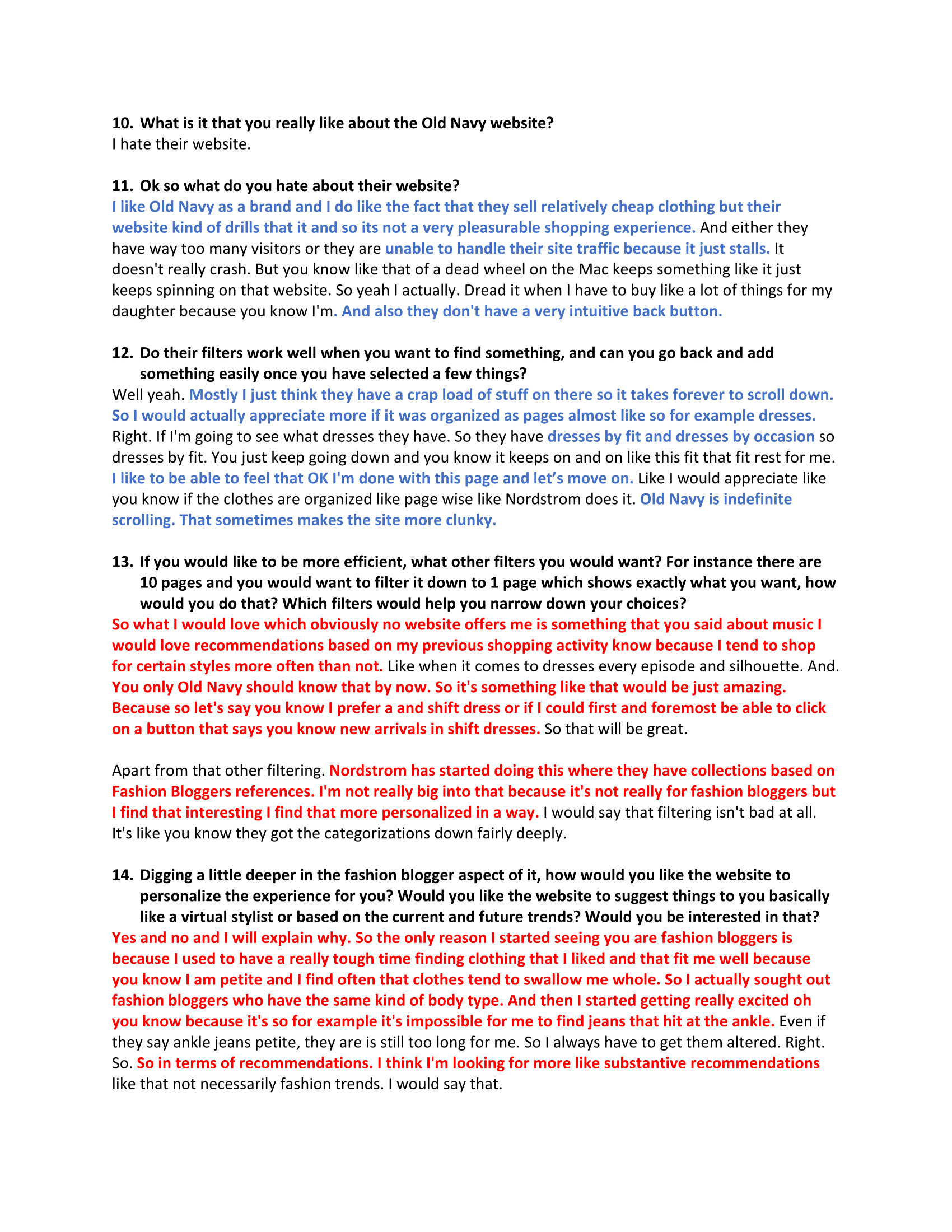



































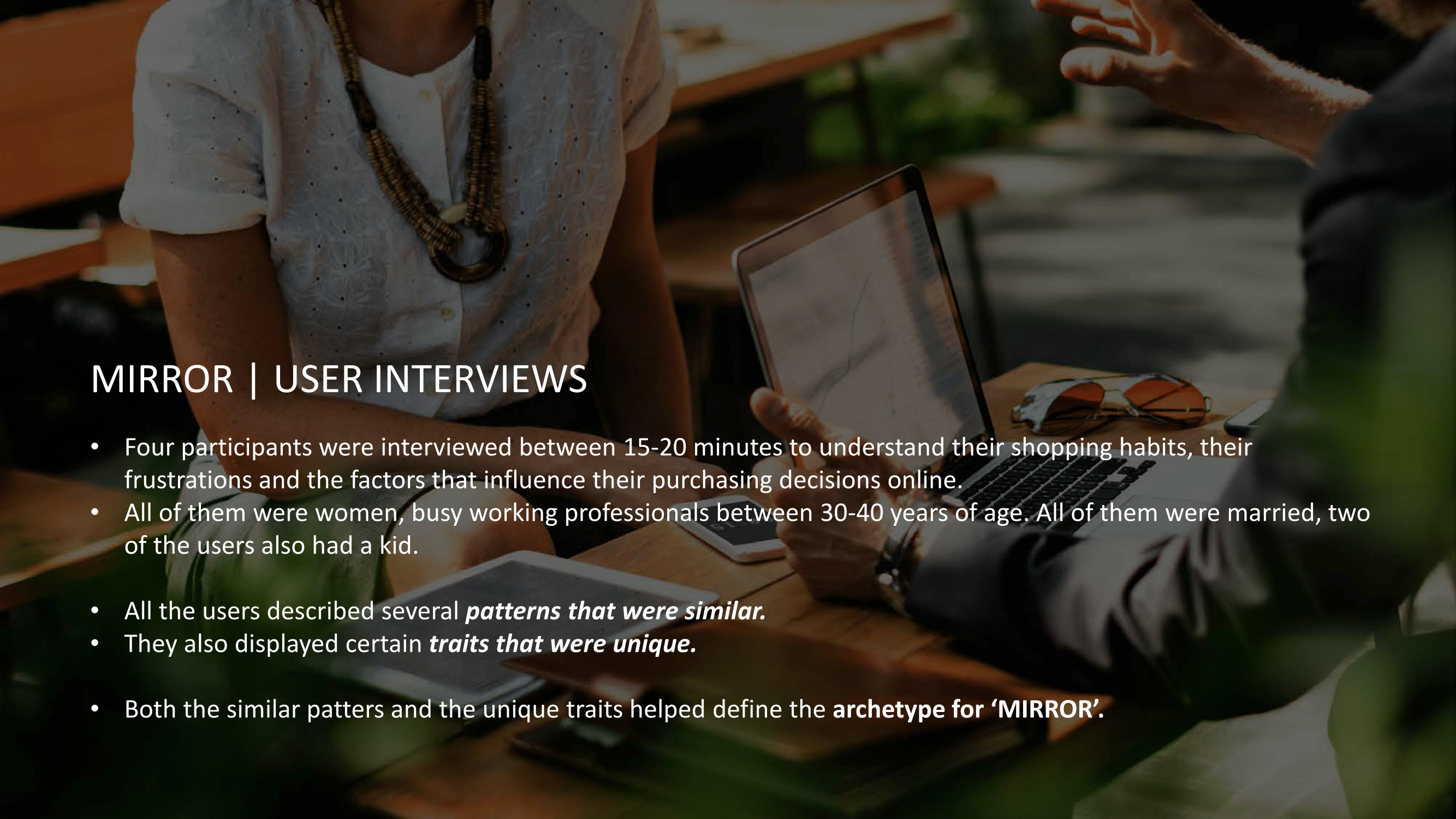















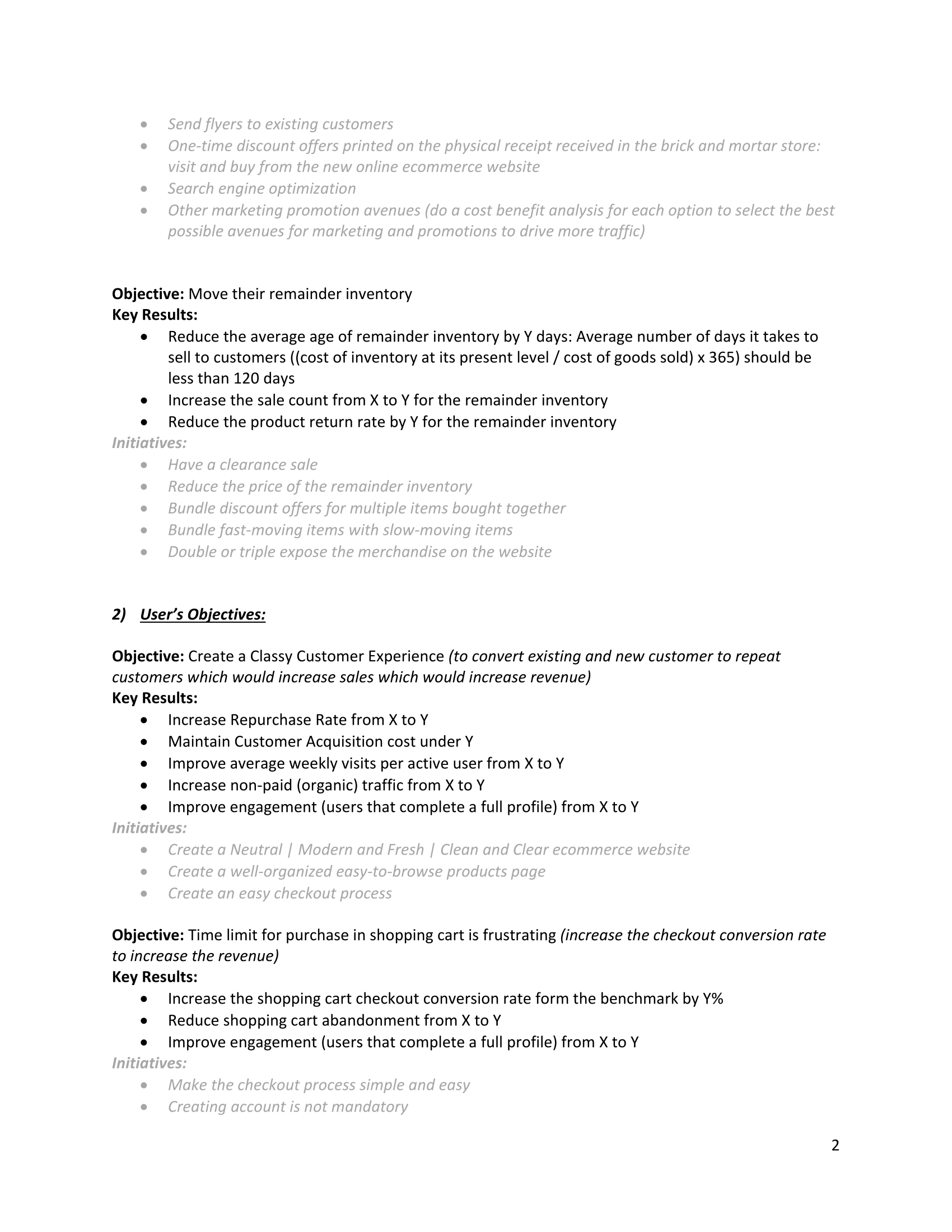






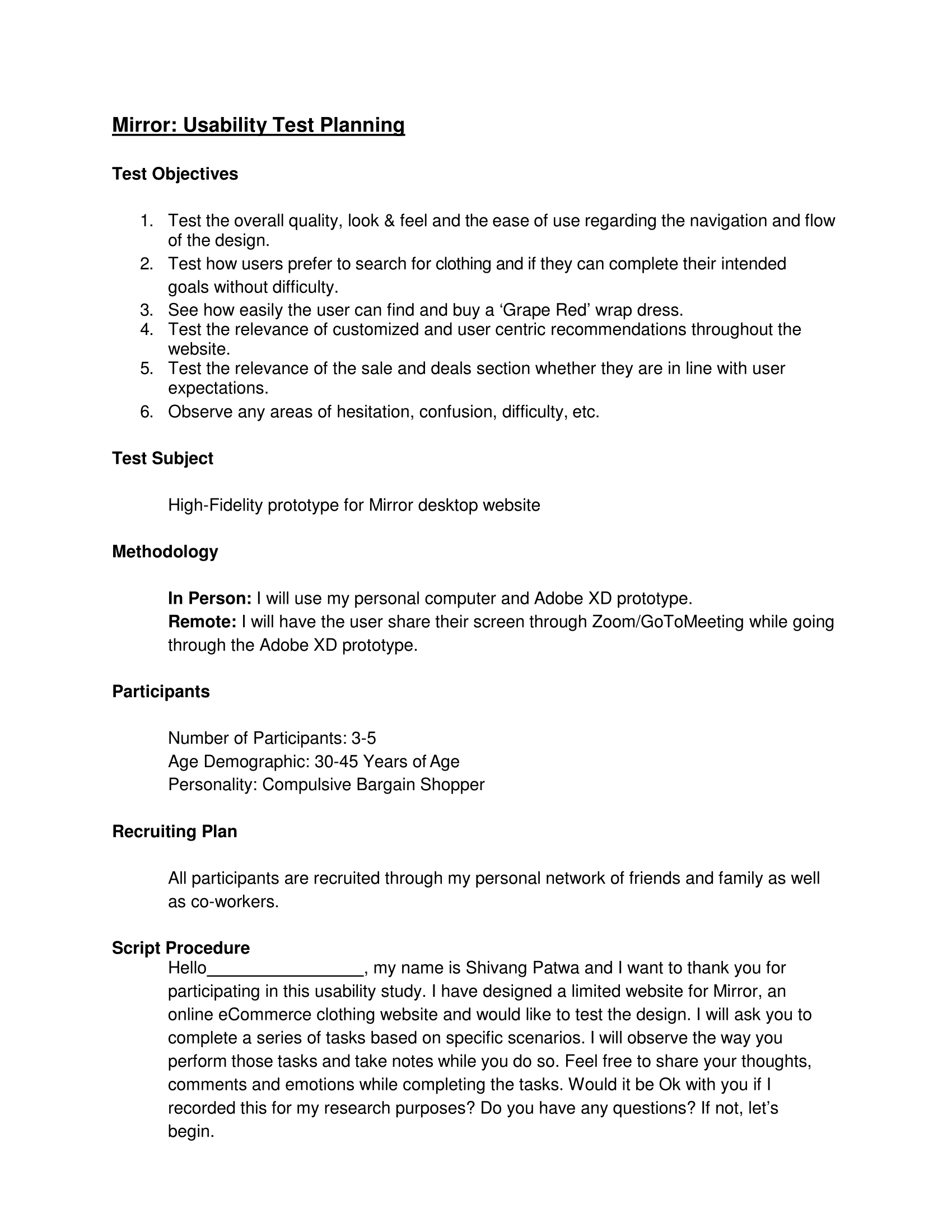








Millennial Hipster who listens to music everyday and has an eclectic taste
(meets with friends every Friday to listen to newly released music on Spotify)
The scope of the project was more research focused. Preliminary research was done to find out why we listen to music, what makes us share music and how technology, entertainment and social media have changed how we discover, listen and share music. After identifying similar patterns and unique user traits, focused research was undertaken to investigate how users currently shared music with friends to identify their frustrations, struggles and work arounds.
Provide a mobile first social feature to share and listen to music together with friends
(create a feature(s) that seamlessly integrate with existing Spotify App on all platforms)
User Experience Designer
Generative Research
Competitor Analysis
User Interviews
Research Findings
UX Strategy Blueprint
Persona
Empathy Map
POV Statements
HMW Questions
Product Road Map
Site Map
Design Alternatives/Crazy 8's
Task Flow & User Flow
Product Requirements
High Fidelity Prototype
Usability Testing and Results
Affinity Map
Priority Revisions
UI Kit
Hand Off
Listening to music has evolved since American inventor Thomas Edison first invented a device to record and place music on in 1877: the phonograph. The sound quality was bad and each recording lasted only for one play. Fast-forward to today, we listen to music on our phones and can simply download songs over the internet. Subsequent evolution in technology changed the way we listen and share music: from gramophones to cassette tapes to CDs to iPods to iPhones.
The advent of social media has further changed the way we discover, listen and share music. When people are having fun, they interact, they dance, they talk, they laugh, they share, they kiss, and they open up. An investigation by Harvard discovered that the 'Reward System' in our brain is ignited by the release of 'Happy Chemicals': Serotonin and Dopamine when we update our social media (receive an email or send a tweet).
The ideal user of the new Spotify Social Feature is Aaron | A Millennial Hipster
He is creative, thoughtful and has an eclectic taste in music. He listens to music almost everyday while commuting, working or exercising. Friends are important to him and loves to share and listen to new music with them every week.
Analysis and synthesis of the 1-1 interviews lead to the following insights:
- It is not easy to discover new music
- Listening to new music every week together with friends is a way to have fun
- Users have emotional connection with music they listen to
- Users have nostalgic memories with specific songs that they reminisce about
- Customized algorithmic user specific music suggestions are not that great
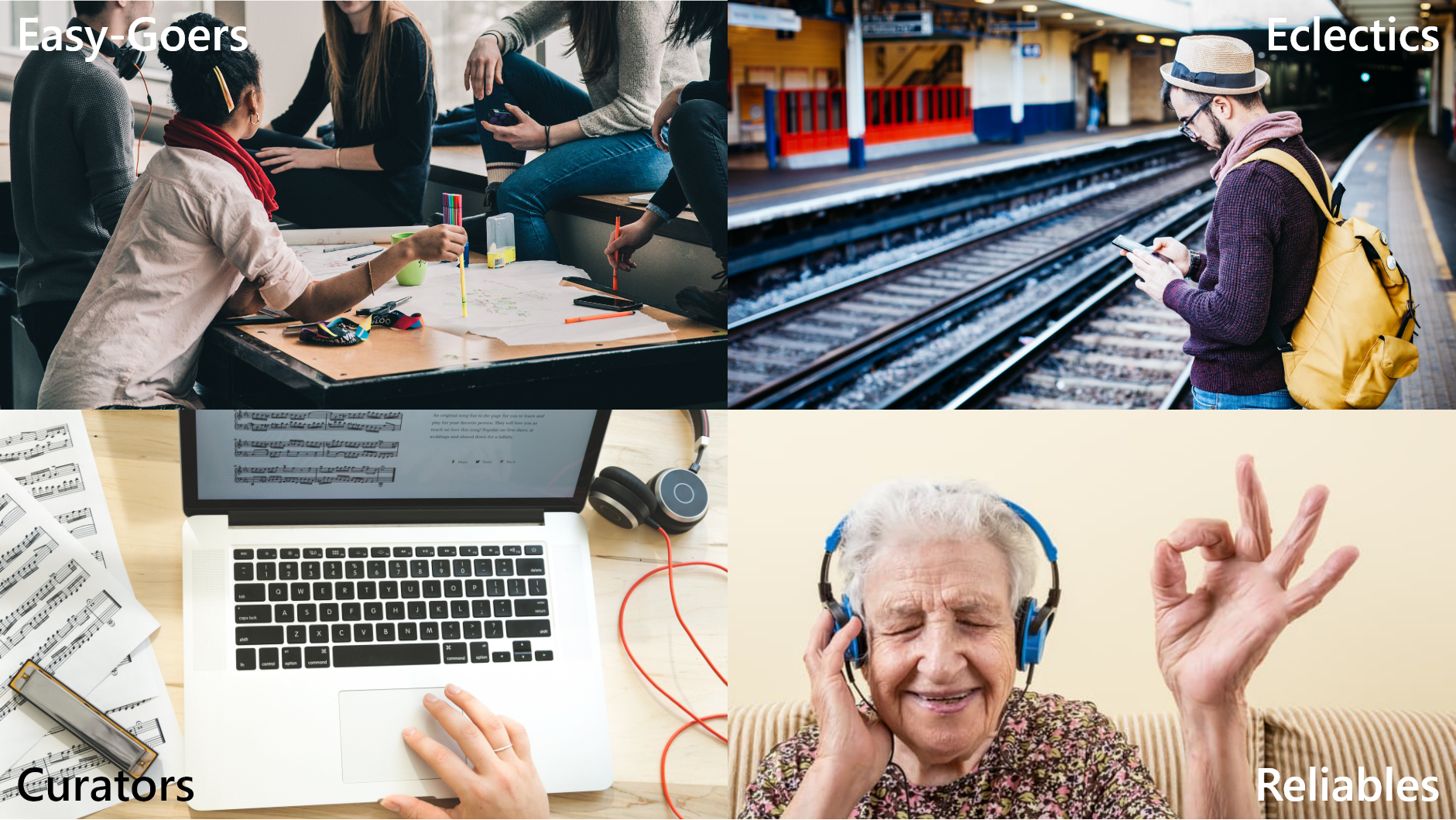
Research began by looking at the digital streaming environment in today's context. Online streaming services such as Spotify and Apple Music became the music industry's single biggest revenue source, overtaking physical sales and digital downloads for the first time in 2018. Using on-demand audio and video services, music fans in the U.S. streamed 403.4 billion recordings in the first half of 2018, according to Nielsen Music. That’s up from 284.8 billion a year ago – a stunning 41.6 percent increase.
We also analyzed the strengths and weaknesses of Spotify's competitors like Apple Music, Pandora, Tidal and SoundCloud. The focus was to see what aspects of the social sharing features they did well and what could be further improved upon. None of the leading streaming services have a fully fleshed out social feature.
Five participants were interviewed to understand how they discover, listen and share music. All of them were Millennials/Gen Z, between 18-35 years of age. There were three men and two women. Three of them worked while the other two were in school.We quickly realized that for Millennials/Gen Z, discovering new music and listening to it every week together with friends was really important.
Based on initial research, four provisional personas were identified:
1. The Easy-Goers
2. The Eclectics
3. The Curators
4. The Reliables
They all differ on various dimensions of Discovery (seek out unfamiliar music), Diversity (range of music), Tilt (curate their experience), Nostalgia (listen to songs of their generation) and Obsession (listen to same song on repeat).
The Easy-Goers: who stream music in the background
The Eclectics: who don't seem to have any specific taste in music
The Curators: who like to make their own playlists
The Reliables: who stick to old favorites
From the interview data a persona and an empathy map was created representing the main user group: The Eclectics - A Millennial Hipster. The persona focuses on Aaron, a young tattoo artist and a budding musician.
Aaron and his girlfriend live together. They listen to all kinds of music all the time. He has an eclectic taste and loves to discover new music with friends.


We used the point-of-view statement (POV) to frame the challenge within Aaron's perspective. This helped us focus on Aaron's needs. By rephrasing the statements in the form of how might we (HMW) questions, we began to explore and conceptualize all the possible ways to address Aaron's needs.

Product RoadMap was used to prioritize the features to accommodate both the business and the user. Based on the research, being able to discover and share new music with their friends every week turned out to be the top priority. Spotify already has 'New Music Friday' where the release new music every week but they do not have a way to share that and listen together simultaneously with a group of friends. Aaron needs the ability to do that within Spotify.

Based on Aaron's need and Product Roadmap we explored a variety of design ideas that would allow Aaron to share and listen to music simultaneously with friends every Friday night using a method called Crazy 8's. We generated a number of sketches and then focused on the strongest idea to refine further.

The final idea was developed further to show all the screens of the new social feature: 'Friday Night Sessions'

Using all the low fidelity sketched screens, both a taskflow and a userflow was mapped out for 'Aaron'. The userflow shows how Aaron can select an album from 'New Music Friday' on Spotify and then create a 'Friday Night Session' to share and listen to it together simultaneously with his invited group of friends.




Since this is a Social Feature that needs to be integrated into the existing brand of Spotify, care was taken to design the elements in a way that seamlessly integrated into the look and feel of the existing Spotify App. High fidelity prototypes for usability testing were created using the existing Spotify UI kit and the Style guide as a reference.


High-fidelity prototypes were used for usability testing. Tests were conducted with five users who closely aligned with the target user group of 'The Eclectic'. The users were asked a few questions about their music sharing experience and were then administered the test. The users were asked to search for 'New Music Friday' on Spotify, select an album and then create a new 'Friday Night Session'. They were then asked to invite a group of friends to join the 'Live Session'. They were also asked to go to the 'Live Chat' after joining the live session.
Everybody could complete the task but felt that they needed more context about the new feature. After providing the context, the participants felt that the new social feature of 'Friday Night Session' was a great way to discover, share and listen to new music together with friends. Some users suggested to provide a demo of the feature with an Update Alert for users to understand what the feature does. They also suggested for the 'Live Session' there was no need to have a private messaging feature, just having a 'Live Chat Room' would suffice.
This feedback helped us iterate upon the initial designs and ultimately create a more user-friendly experience. Priority revisions were made before hand off.
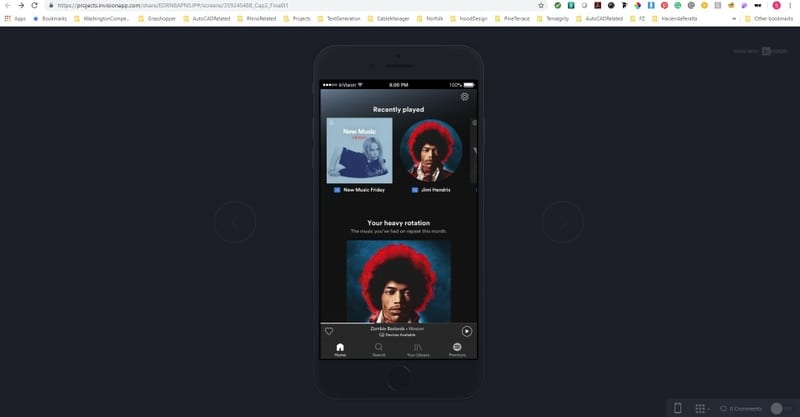






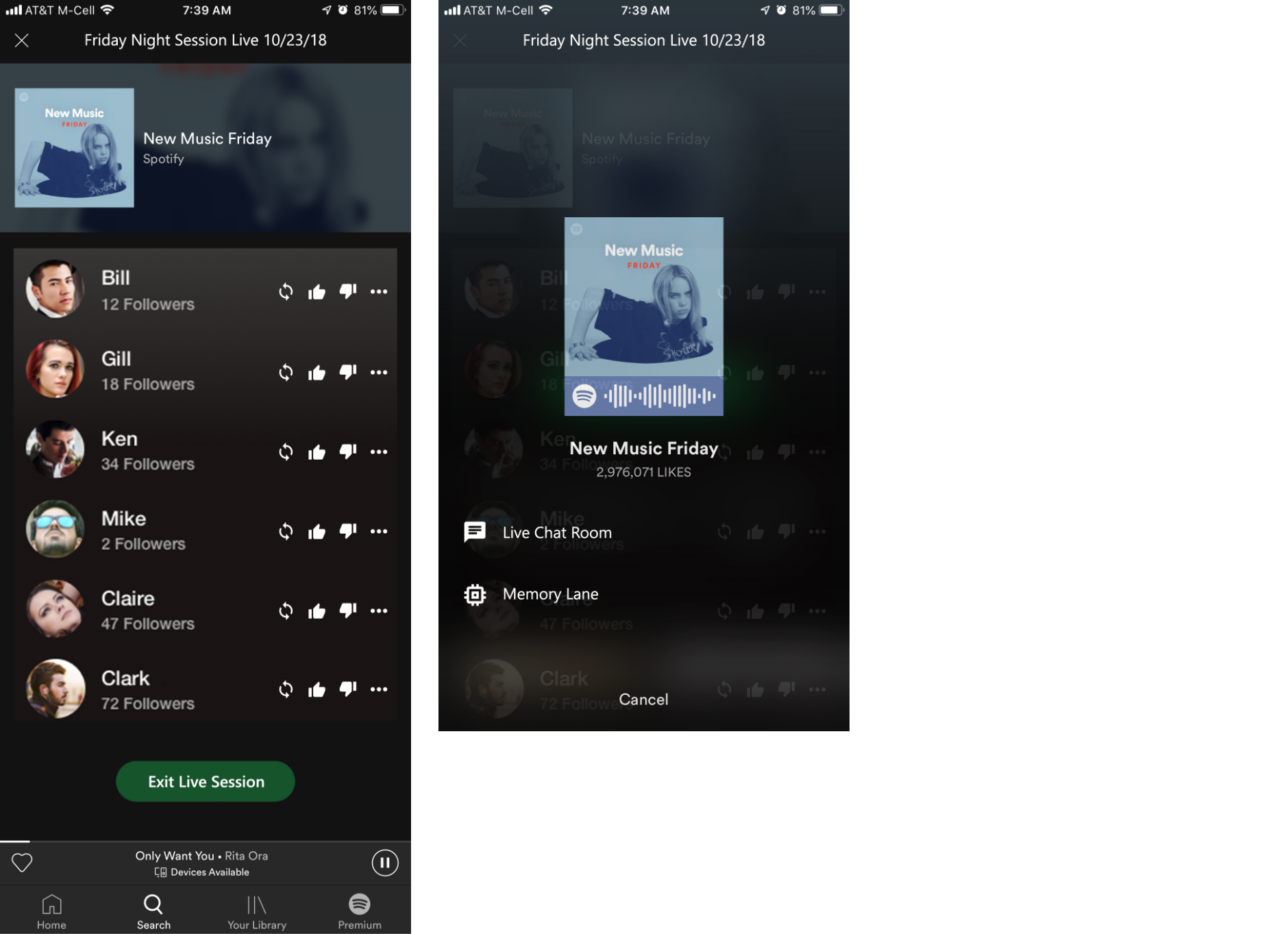
Streaming is officially the lifeblood of the U.S. music industry. Streaming generated 75% of the industry revenue in 2018, up 10 percentage points from 2017. 62% of Spotify audience are Millennials (Spotify First Party Data, March 2018). They are the first fully digital generation, ushering in dramatic changes to the way that media is consumed and technology is used. They are far more likely than their elders to pay for music streaming. Their social currency is based on discovering something new and sharing it with their friends so they're always on the hunt for the next artist, playlist or single.
Looking back on the project, time permitting, it would have been good to also work on the priorities 2 & 3 of the project road map: Re-live past moments feeling nostalgic with friends | figure out ways to share music intuitively. 'Memory Lane' feature is something that I would have liked to develop further.
It is important as UX Designer to be able to look at things from someone else's perspective: The User. Being able to listen to the user without judgement is as important as understanding their pain points and struggles. These insights would help you develop a more intuitive and useful user experience.